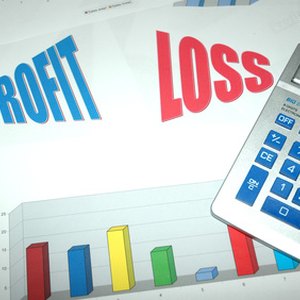
When you sell stock during the year, you must report the profit or loss on the sale in your annual income tax return filed after the year ends. Gains or losses from the sale of stock are referred to as capital gains and losses in the tax rules. Stock sale losses as well as gains must be reported with your tax return.
Tax Forms
The form used to report the gain or loss for taxes is the IRS Schedule D. The completed Schedule D is attached to your Form 1040 when you file income taxes. The sale of stock is not reported separately from your regular income tax filing. The Schedule D has boxes for all of the information you must report concerning the sale of stock.
Required Information
To complete the Schedule D you need the facts concerning the purchase and sale of the stock. For the purchase, the requirements are the date of purchase and the amount paid for the stock. On the sale, the date and the amount received from the sale will be reported. Your stock broker will provide a form with the sales information. You will need to find the purchase date and price in your own records. If you bought the stock in the same brokerage account as the sale, the broker should be able to also provide the purchase information.
Types of Gains
Capital gains and losses are dividend into long-term gains or losses and short-term gains or losses. The sale of stock will qualify for the long-term tax treatment if the stock was owned for more than one year. Short-term gains or losses are for stocks owned for a year or less. Short- and long-term losses can be used to offset gains of the same type. Excess losses can be used to offset up to $3,000 of other income.
Income Tax Rates
Short-term gains are taxed at your regular, marginal income tax rate, while long-term gains are taxed at a lower rate. For 2011 and 2012, the tax rates for long-term capital gains are zero percent for tax payers in the two lowest tax brackets and 15 percent for tax payers in the higher income tax brackets.
References
- "Bankrate.com"; Reporting your capital gains (or losses); Kay Bell
- Arizona Society of CPAs Blog: Tax Relief, Unemployment Insurance Reauthorization and Jobs Creation Act of 2010
- Internal Revenue Service. "2018 Instructions for Schedule D: Capital Gains and Losses," Page 4. Accessed Nov. 25, 2019.
- Internal Revenue Service. "Topic No. 409 Capital Gains and Losses." Accessed Nov. 25, 2019.
- Internal Revenue Service. "Topic No. 703 Basis of Assets." Accessed Nov. 25, 2019.
- Internal Revenue Service. "2018 Publication 550 Investment Income and Expenses," Page 40. Accessed Nov. 25, 2019.
- Internal Revenue Service. "2018 Instructions for Form 8949 Sales and Other Dispositions of Capital Assets," Page 3. Accessed Nov. 25, 2019.
- Internal Revenue Service. "2018 Instructions for Schedule D Capital Gains and Losses," Page 12. Accessed Nov. 25, 2019.
- Internal Revenue Service. "2018 Instructions for Schedule D Capital Gains and Losses," Page 11. Accessed Nov. 25, 2019.
- Internal Revenue Service. "Losses (Homes, Stocks, Other Property)." Accessed Nov. 25, 2019.
- Internal Revenue Service. "2018 Instructions for Schedule D Capital Gains and Losses," Pages 5 & 6. Accessed Nov. 25, 2019.
Writer Bio
Tim Plaehn has been writing financial, investment and trading articles and blogs since 2007. His work has appeared online at Seeking Alpha, Marketwatch.com and various other websites. Plaehn has a bachelor's degree in mathematics from the U.S. Air Force Academy.

